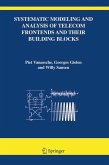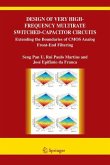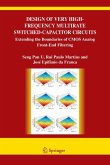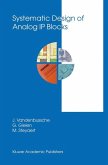nalog circuits are fascinating artifacts. They manipulate signals whose informa- Ationcontentisrichcomparedtodigitalsignalsthatcarryminimalamountofinf- mation;theyaredelicateinthatanyperturbationduetoparasiticelements,todelays,to interactionswithotherelementsandwiththeenvironmentmaycauseasigni?cantloss ofinformation. Thedif?cultyindealingwiththeseartifactsistoprotectthemfromall possibleattacks, evenminorones, fromthephysicalworld. Theironyisthattheyare oftenusedtofunnelinformationfromandtothephysicalworldtoandfromtheabstr- tionofthedigitalworldandforthisfunction, theyareirreplaceable. Nowonderthen that analog designers form a club of extraordinary gentlemen where art (or magic?) ratherthanscienceisthesharedtrade. Theyaredif?culttotrainsinceexperienceand intuitionarethetraitsthat characterize them. Andthey have dif?cultiesinexplaining what is the process they use to reach satisfactory results. Tools used for design (s- ulation) are mainly replacing the test benches of an experimental lab. However, the growing complexity of the integrated systems being designed today together with the increasing fragility of analog components brought about by shrinking geometries and reducedpowerconsumptionisposingseverechallengestotraditionalanalogdesigners to produce satisfactory results in a short time. At the same time, the need for expe- enced analog designers has increased constantly since almost all designs, because of integration,docontainanalogcomponents. Thissituationhascreatedastronginterest in developing design methodologies and supporting tools that are based on rigorous, mathematically literate, approaches. Doing so will make it possible to leverage the expertiseofseasonedanalogdesignersandtotrainnewgenerationsfasterandbetter. Inthepast, severalattemptshavebeenmadeinacademia andindustrytocreatethese methodologies and to extend the set of tools available. They have had questionable acceptance in the analog design community. However, recently, a ?urry of start-ups andincreasedinvestmentbyEDAcompaniesinnoveltoolssignalasigni?cantchange inmarketattentiontotheanalogdomain. Ipersonallybelievethattosubstantially- prove quality and design time, tools are simply insuf?cient. A design methodology based on a hierarchy of abstraction layers, successive re?nement between two ad- cent layers, and extensive veri?cation at every layer is necessary. To do so, we need to build theories and models that have strong mathematical foundations. The analog design technology community is as strong as it has ever been.
"This book has a good tutorial dimension. In particular, the idea of describing in plain words the essence of the approaches before diving into the mathematical details, makes reading this book a pleasant experience without sacrificing precision and rigor."
Professor Alberto Sangiovanni-Vincentelli
Professor Alberto Sangiovanni-Vincentelli








